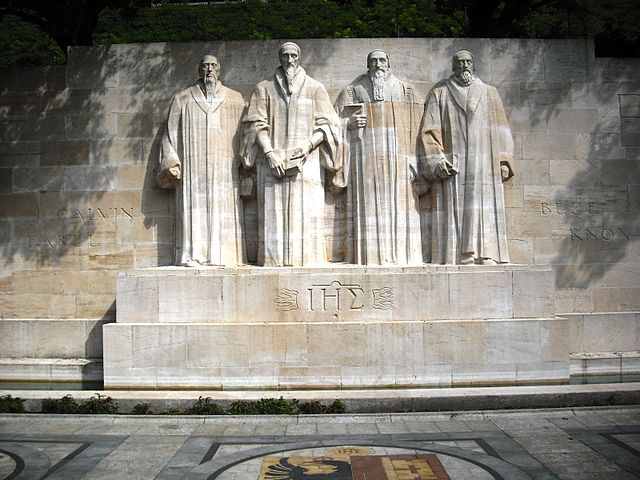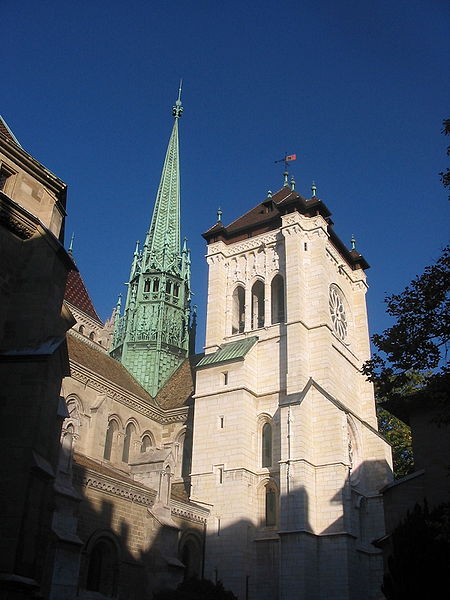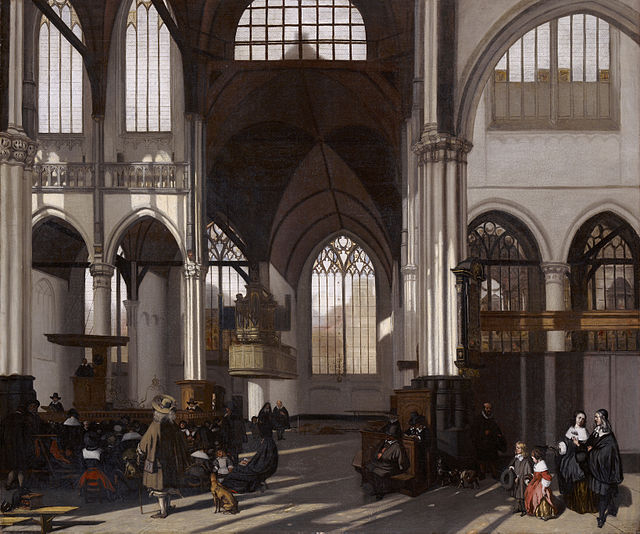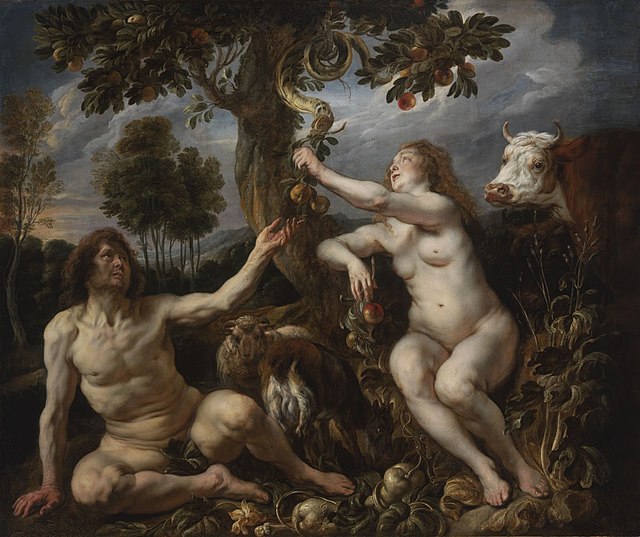Westminster Confession of Faith
The Westminster Confession of Faith, or simply the Westminster Confession, is a Reformed confession of faith. Drawn up by the 1646 Westminster Assembly as part of the Westminster Standards to be a confession of the Church of England, it became and remains the "subordinate standard" of doctrine in the Church of Scotland and has been influential within Presbyterian churches worldwide.
Title page of a 1647 printing of the confession
The Assertion of Liberty of Conscience by the Independents at the Westminster Assembly of Divines, painted by John Rogers Herbert, c. 1844
Reformed Christianity, also called Calvinism, is a major branch of Protestantism that began during the sixteenth-century Protestant Reformation, a schism in the Western Church. In the modern day, it is largely represented by the Continental, Presbyterian, and Congregational traditions, as well as parts of the Anglican and Baptist traditions.
Statues of William Farel, John Calvin, Theodore Beza, and John Knox, influential theologians in developing the Reformed faith, at the Reformation Wall in Geneva
Calvin preached at St. Pierre Cathedral in Geneva.
Early Calvinism was known for simple, unadorned churches as depicted in this 1661 portrait of the interior of the Oude Kerk, Amsterdam
Fall of Man by Jacob Jordaens






